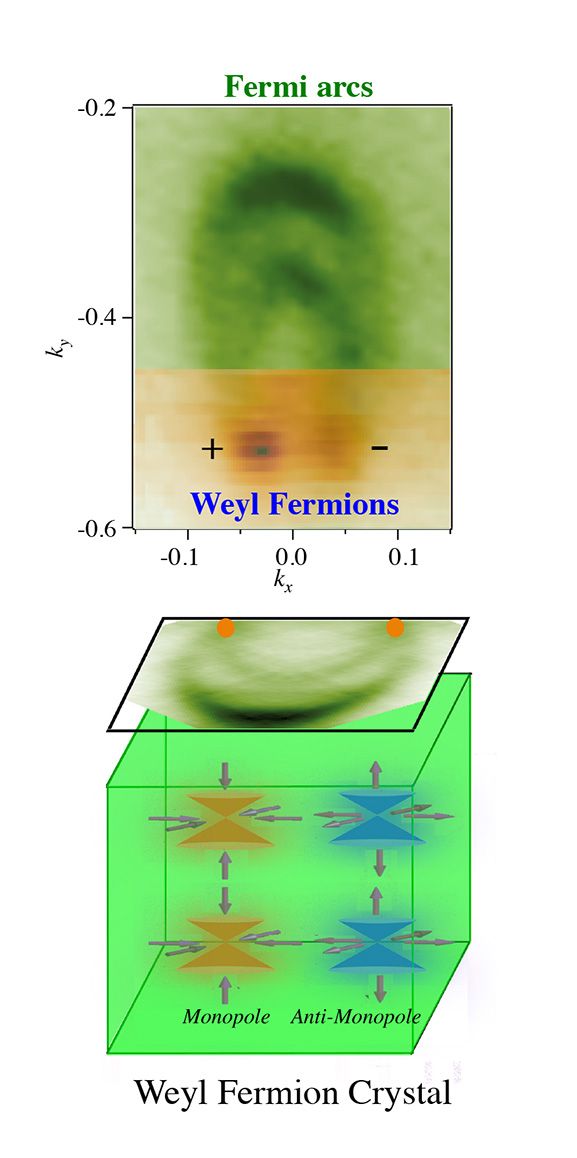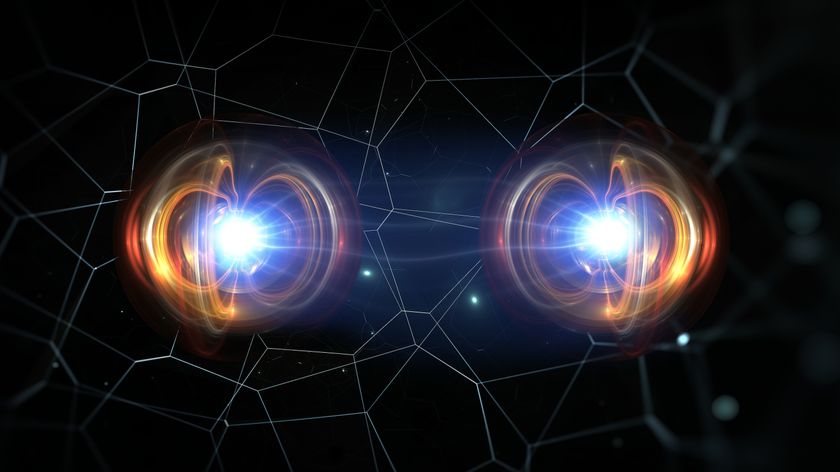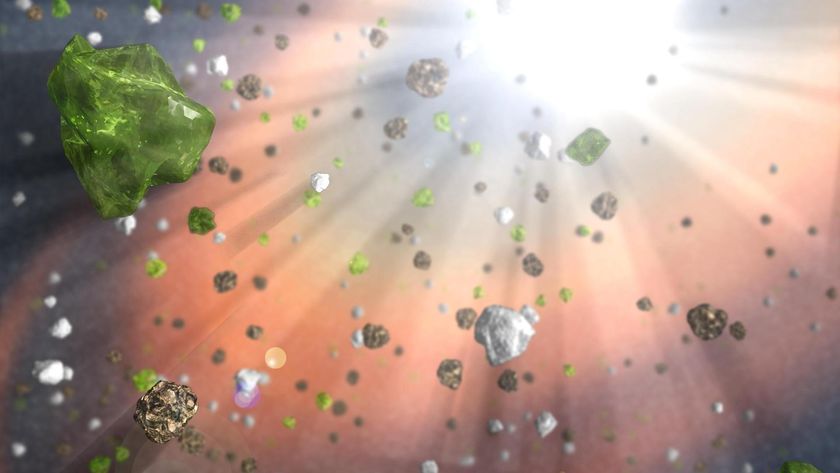
A long-sought particle with no mass proposed more than 85 years ago has finally been created in the lab.
The mysterious particle, called a Weyl fermion, emerged from a crystal of a material called a semi-metal. By bombarding the crystal with photons, the team produced a stream of electrons that collectively behaved like the elusive subatomic particles.
The new discovery not only sheds light on the behavior of one of the most elusive fundamental particles, it could pave the way for ultra-low-power electronics, said study co-author Su-Yang Xu, a physicist at Princeton University in New Jersey. [Wacky Physics: The Coolest Little Particles in Nature]
Long-sought particle
Mathematician Hermann Weyl first proposed the mysterious massless particle in 1929. The particles would have a spin, but would also have "chirality," meaning they would spin as they traveled through space in either a left- or right-handed orientation, Xu said. When a left- and right-handed Weyl fermion come into contact, they would annihilate each other.
According to the Standard Model, the reigning model that describes subatomic particles, two major types of particles exist: Bosons and fermions. Bosons carry force and fermions are the teensy constituents of matter. However, scientists have long thought that fermions came in three types: Dirac, Majorana and Weyl. So far, scientists have found evidence in particle accelerators of the first two, but no hint of the latter.
However, in a 2011 study in the journal Physical Review B, researchers proposed that a crystal lattice with certain properties could produce Weyl fermions under the right conditions. In order to produce the ghostly particles, the material would need a certain kind of asymmetry, and would also have to be a semi-metal, a material with properties between an insulator and a conductor. The catch was that nobody knew exactly which materials to try.
Sign up for the Live Science daily newsletter now
Get the world’s most fascinating discoveries delivered straight to your inbox.
So Xu and his colleagues pored over a database containing nearly 1 million descriptions of crystal lattices. They decided that a lattice made up of tantalum and arsenic would be a promising place to look. So they bombarded a tantalum-arsenide lattice with a beam of photons (particles of light), which energize electrons in the material. The extra bump of energy provided by the photons kicked the electrons out of their normal positions in the lattice and sent them moving. By detecting these displaced electrons, the team could understand how they were moving through the lattice.
By analyzing those properties, the team found that the electrons were acting very strangely. "The electron quasi-particle behaves exactly like a Weyl fermion," Xu said.
Better than superconductor
The new find could pave the way for better electronics. Weyl fermions are very stable, and, just like light, will stay at the same speed on the same course unless they annihilate with other Weyl fermions of the opposite chirality. As a result, they can travel for long distances and carry a charge without getting scattered inside the crystal lattice and generating heat, as normal electrons do, Xu said.
That means the new material could theoretically carry current better than existing materials used in electronics, Xu said.
And unlike superconductors, which only work when bathed in ultra-cold liquid helium or nitrogen, the new material could operate at room temperatures, Xu added.
In addition, one of the quirks of Weyl fermions is that on the quantum scale, when they experience an electric or magnetic field, they can switch their chirality, Xu said.
That means they have a strange "teleportation" ability, meaning they can spontaneously switch from a left- to right-handed flavor, in essence transporting a fermion of one flavor to a different location, said Leon Balents, a physicist at the Kavli Institute for Theoretical Physics at the University of California Santa Barbara, who was not involved in the study.
But the new finding, though fascinating, doesn't make the odds any better that a Weyl fermion could be found at an atom smasher like the Large Hadron Collider, said Ashvin Vishwanath, a theoretical condensed matter physicist at the University of California at Berkeley, who authored the 2011 study first proposing the existence of Weyl semi-metals.
"This sheds no light whatsoever on whether there are Weyl fermions in terms of fundamental particles," Vishwanath, who was not involved in the current study, told Live Science.
Either way, creating analogies to the fundamental particles in crystals could reveal new insights into how those particles would behave in the real world, he added.
"It's certainly giving a deeper understanding of some of these ideas in particle physics because you have to think about them in a new context," Vishwanath said.
Follow Tia Ghose on Twitter and Google+. Follow Live Science @livescience, Facebook & Google+. Original article on Live Science.

Tia is the managing editor and was previously a senior writer for Live Science. Her work has appeared in Scientific American, Wired.com and other outlets. She holds a master's degree in bioengineering from the University of Washington, a graduate certificate in science writing from UC Santa Cruz and a bachelor's degree in mechanical engineering from the University of Texas at Austin. Tia was part of a team at the Milwaukee Journal Sentinel that published the Empty Cradles series on preterm births, which won multiple awards, including the 2012 Casey Medal for Meritorious Journalism.











